On Sept. 25, 1973, the longest human spaceflight up to that time ended with the splashdown of the Skylab 3 crew of Alan L. Bean, Owen K. Garriott, and Jack R. Lousma. Their 59-day flight more than doubled the previous 28-day record set by the Skylab 2 crew just three months earlier. Based on lessons learned during that earlier mission, such as the need for additional exercise and improved nutrition, the Skylab 3 crew returned in better physical condition despite their longer mission duration. They accomplished more biomedical, solar physics, and Earth resources research than planned. During three spacewalks, they completed repairs and maintenance on the station. The lessons learned from Skylab 3 aided the third and final 84-day Skylab mission and found application in future long-duration programs such as Shuttle-Mir and the International Space Station.
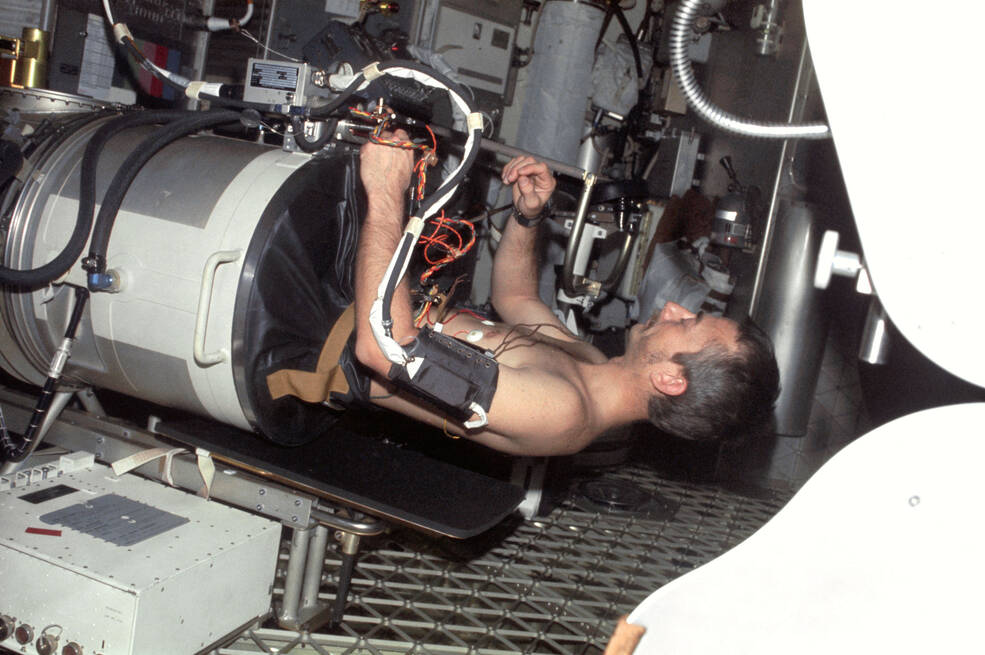
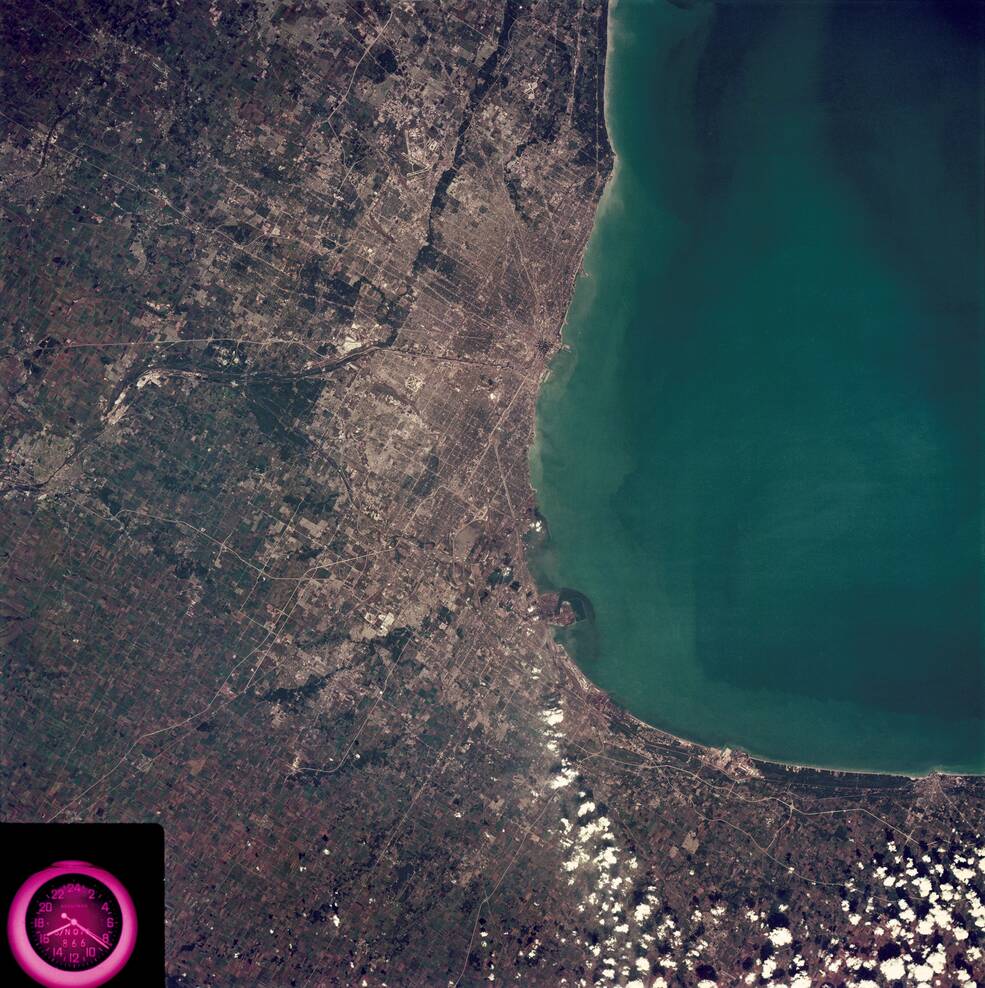
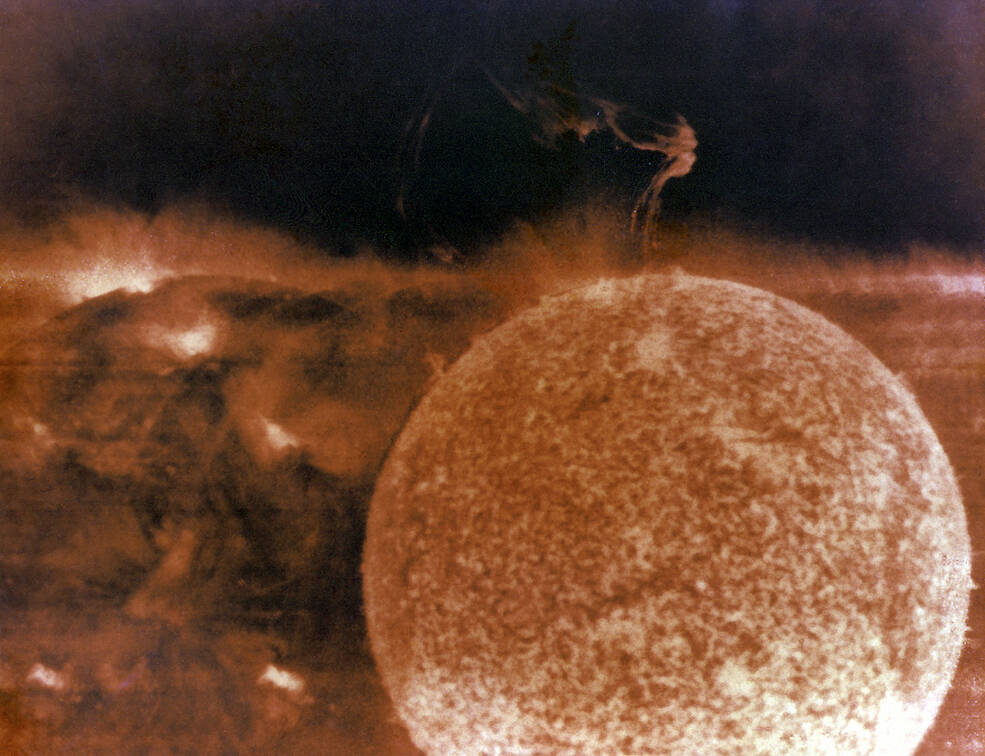
Left: Skylab 3 astronaut Owen K. Garriott in the Lower Body Negative Pressure device to monitor his cardiovascular changes during long duration spaceflight. Middle: Earth Resources Experiment Package image of Chicago. Right: An image of the Sun taken by one of the Apollo Telescope Mount instruments.
Bean, Garriott, and Lousma began their record-setting mission on July 28, when they blasted off from NASA’s Kennedy Space Center in Florida. Overcoming a leaky set of spacecraft thrusters, they docked with the Skylab space station 8 hours later. After recovering from space motion sickness the first few days of the mission, and dealing with a second set of leaky thrusters, the crew got busy with conducting science investigations and making repairs to the station. On Aug. 6, during the mission’s first spacewalk, Garriott and Lousma deployed the twin-pole sunshade over the existing parasol to help cool the station. They also replaced film cassettes in the Apollo Telescope Mount (ATM). The pair conducted a second spacewalk on Aug. 24, to replace ATM film canisters and install a 24-foot cable for a new set of rate moment gyroscopes they installed inside the station. After they surpassed the Skylab-2 28-day duration on Aug. 25, flight surgeons and mission managers cleared the continuation of their flight on a week-by-week basis after assessing the health of the crew and the station. The astronauts had requested a 10-day mission extension, but after reviewing the status of the research and their consumables, mission managers decided to maintain the planned 59-day duration.
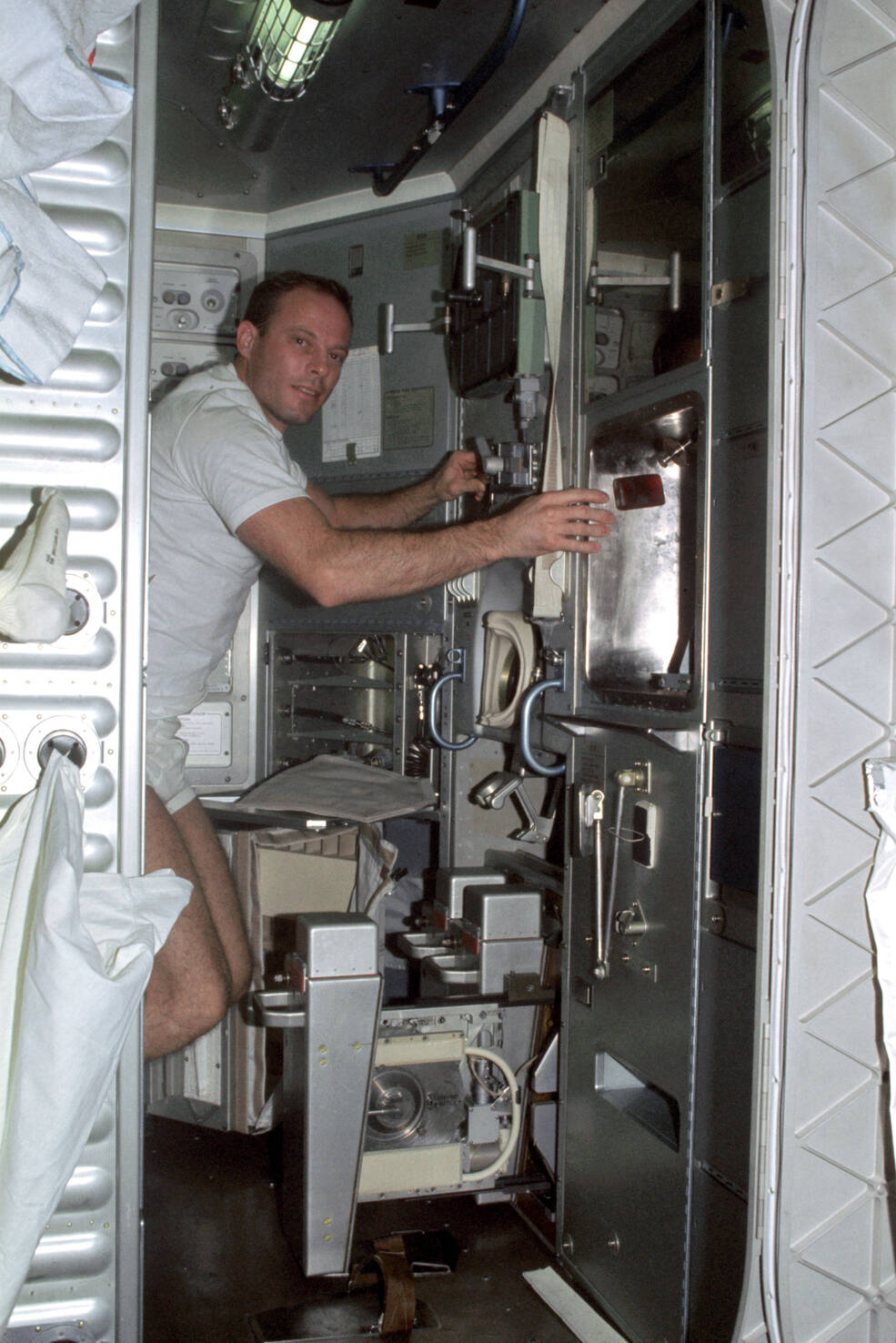
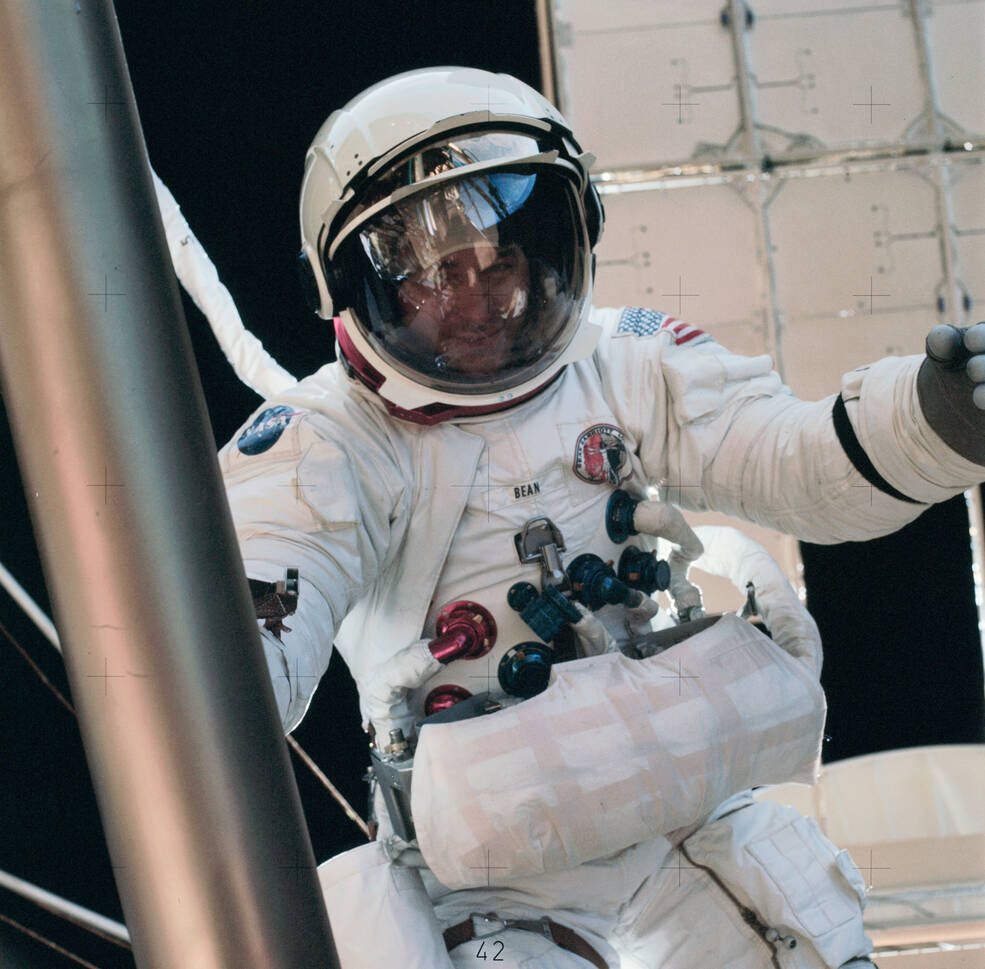
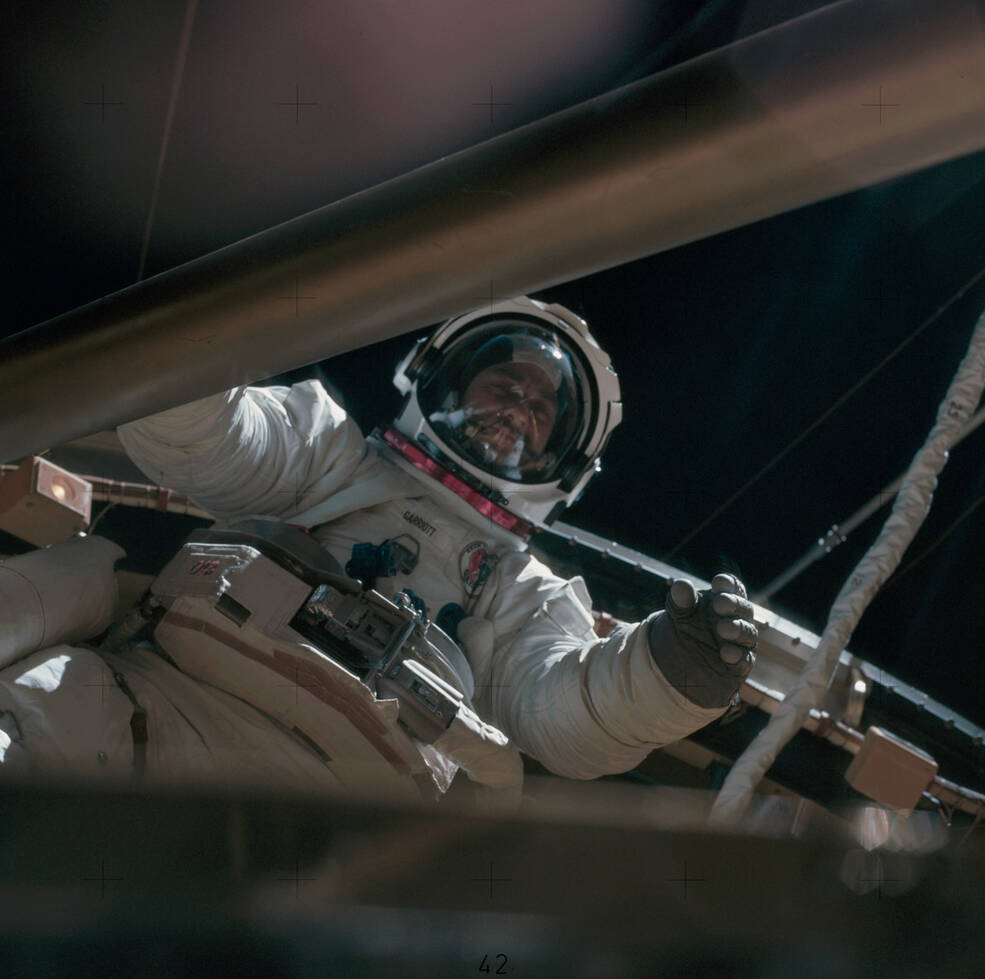
Left: Skylab 3 astronaut Jack R. Lousma works at the Waste Collection System. Middle: Skylab 3 astronaut Alan L. Bean during the third and final spacewalk of the mission. Right: Skylab 3 astronaut Owen K. Garriott during the third spacewalk.
During the third and final spacewalk Sept. 22 lasting 2 hours and 41 minutes, Bean and Garriott retrieved all the exposed film cassettes from the ATM for return to Earth and installed some fresh ones. In the three spacewalks, the Skylab 3 crew spent nearly 14 hours outside the station, at the time a record for a single Earth orbital mission. The crew adapted well to living and working in space, and based on lessons learned from the Skylab-2 mission, they increased their daily exercise and their caloric intake. They completed 300 more hours of research than planned, conducting a variety of science, technology and education experiments. The biomedical investigations focused on better understanding their physiological responses to long-duration space flight, including changes to their cardiovascular, neurovestibular, and musculoskeletal systems and their overall metabolism and nutrition. The crewmembers completed more than the expected number of observations of selected ground sites using multispectral instruments in the Earth Resources Experiment Package (EREP) and exceeded planned solar and astronomy observations with the ATM. As a technology demonstration, the crew practiced flying the Astronaut Maneuvering Unit, a precursor to the Manned Maneuvering Unit used during the space shuttle program to retrieve and service satellites, inside the spacious dome of the Orbital Workshop. In addition to the wealth of science data accumulated, the Skylab 3 mission provided an important experience in operating a long-duration facility in space. The lessons learned helped the third and final Skylab crew complete an 84-day mission and found application in future programs such as Shuttle-Mir and the International Space Station.
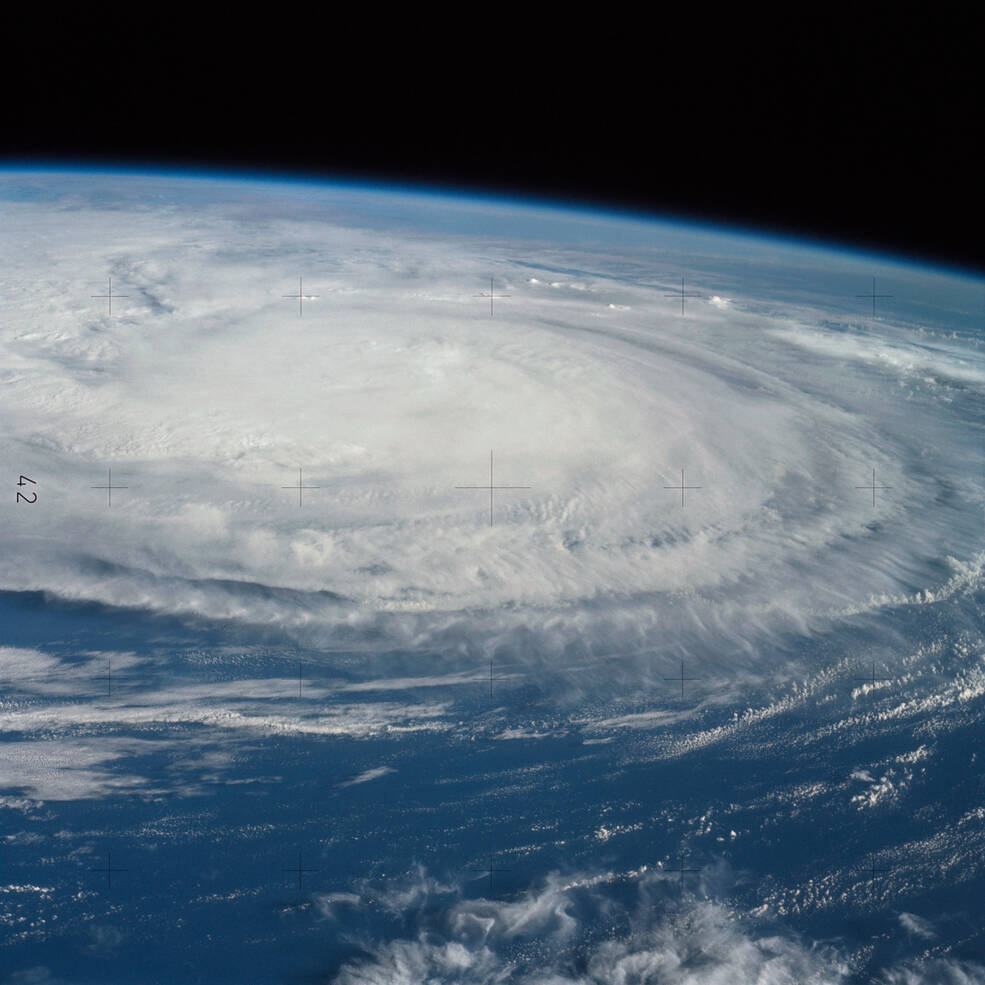
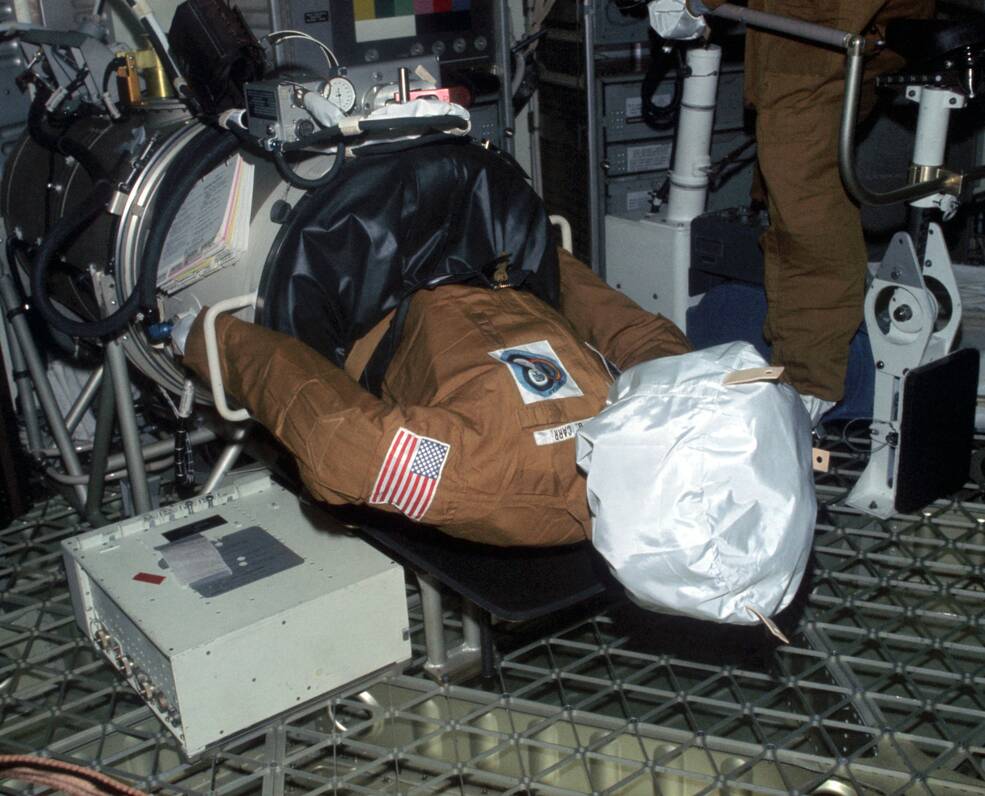
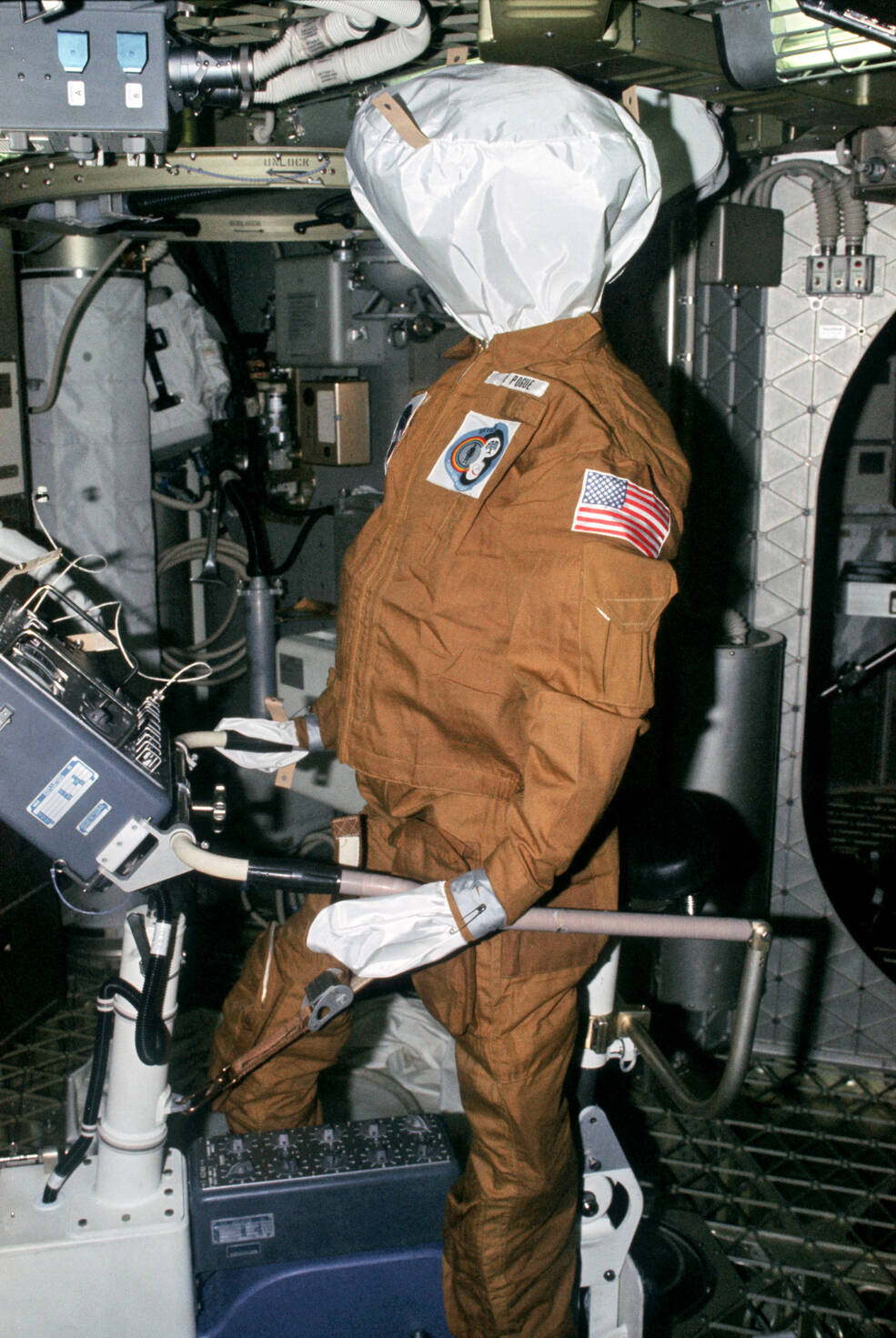
Left: Skylab 3 astronaut photograph of Hurricane Ellen swirling in the Atlantic Ocean. Middle and right: The Skylab 3 astronauts stuffed the Skylab 4 astronauts’ flight suits with clothes and posed them around the station for them to find when they arrived at the station.
Beginning five days before reentry, the astronauts started the process to reactivate the Apollo CSM, dormant for nearly two months, and stowing all the gear and samples for return to Earth. They began deactivating some of Skylab’s systems to prepare it for its uncrewed period until the next crew arrived. They stuffed the Skylab 4 crew’s flight suits with unused clothing and set them up as mannikins in the lower body negative pressure device, on the bicycle ergometer, and near the waste collection system, to surprise the next crew upon their arrival. On Sept. 25, Bean undocked the spacecraft from Skylab. Because of the ongoing thruster issues – they had to shut off two of the four sets early in the mission – they did not conduct a flyaround of the station. Two hours after undocking, they fired the Service Module’s engine only once instead of the two-burn profile originally planned.
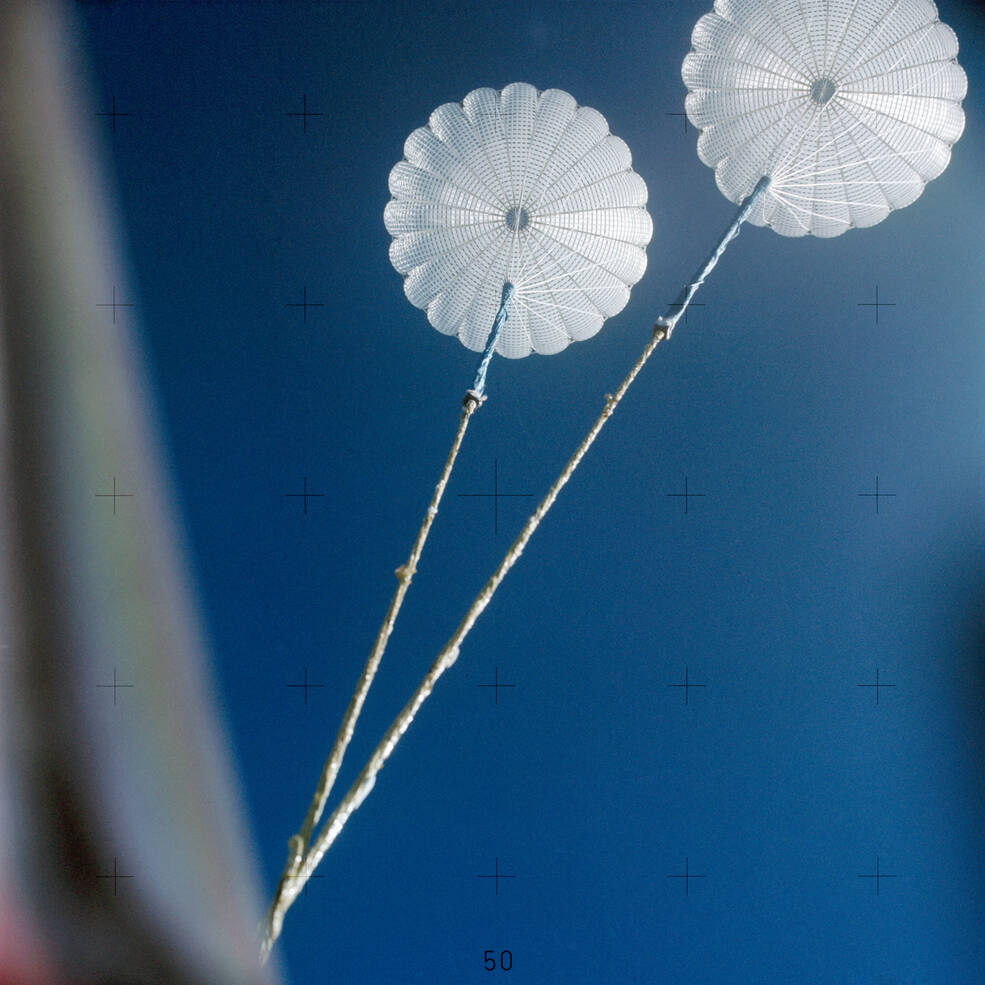
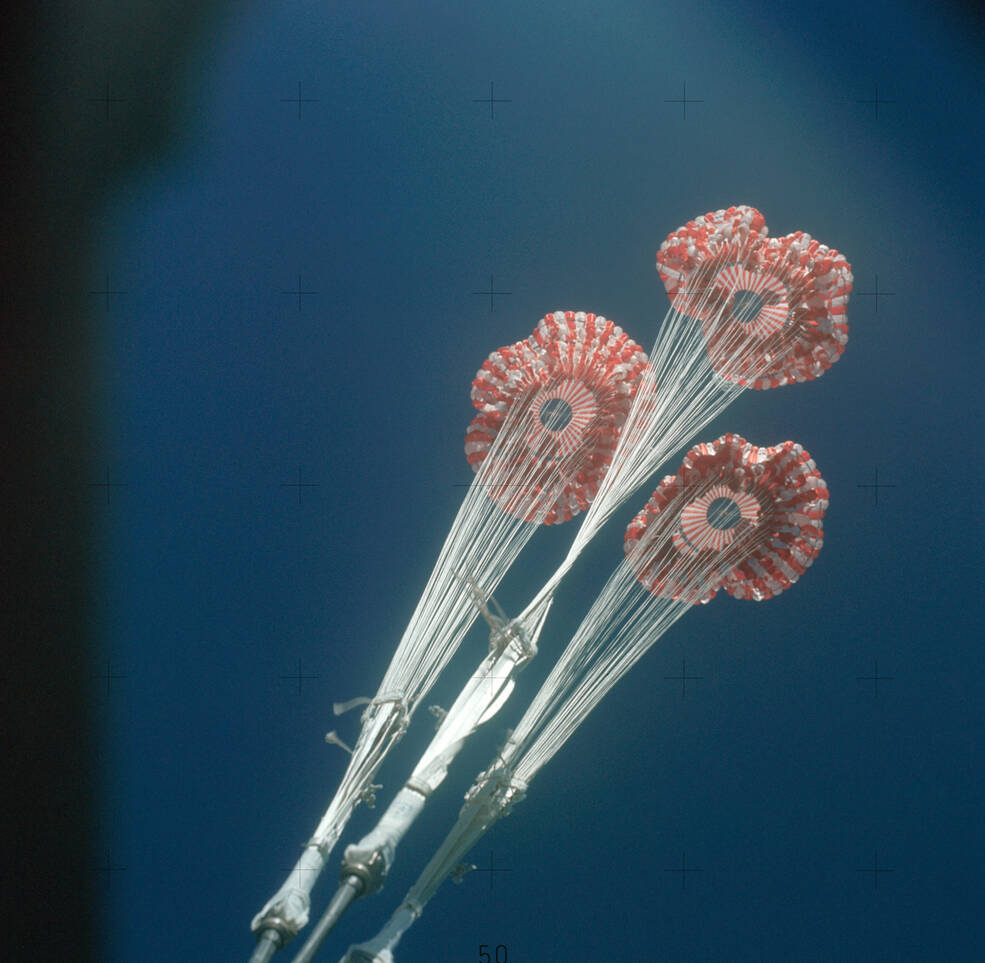
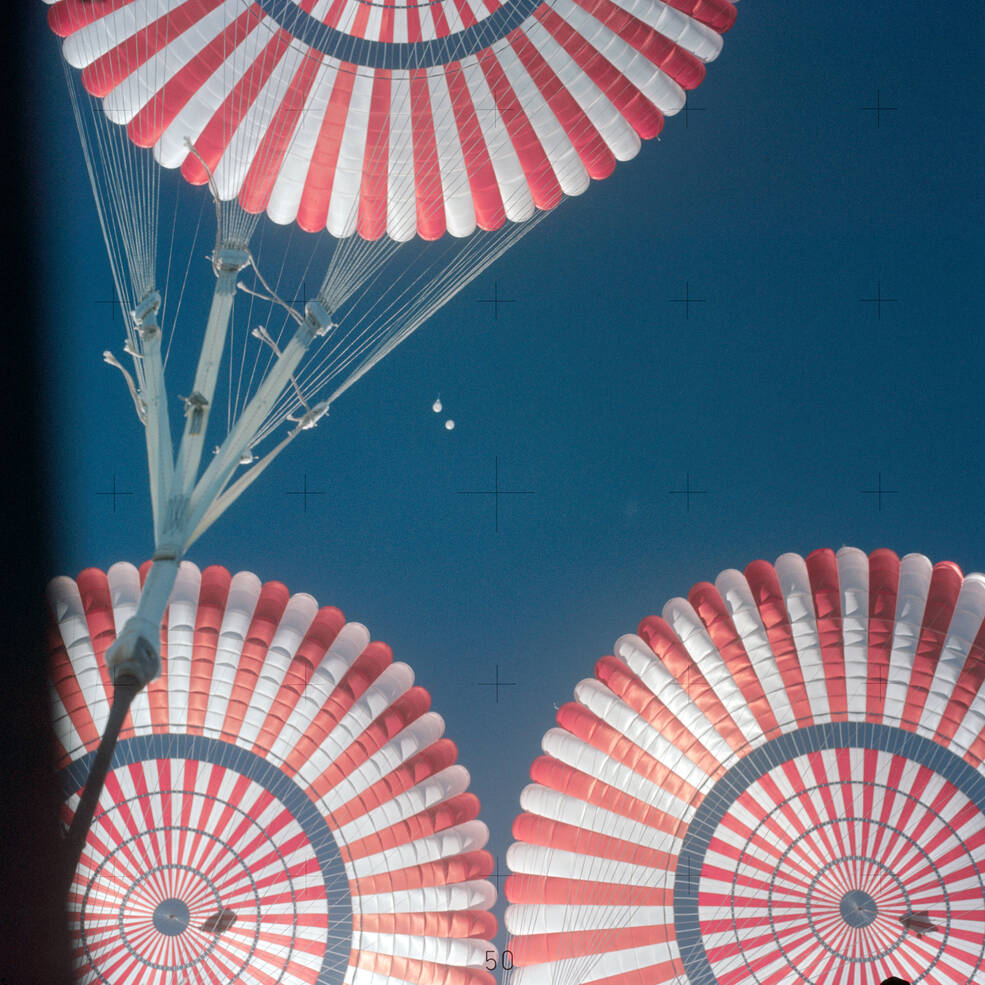
Left: Following reentry, two drogue parachutes opened at 24,000 feet to slow and stabilize the Command Module (CM). Middle: At 10,000 feet, the three main parachutes opened to further slow the CM’s descent. Right: The three main parachutes have fully opened.
Following reentry, at 24,000 feet two drogue parachutes opened to stabilize and slow the spacecraft. At 10,000 feet, the three 83-foot diameter main parachutes opened to slow the spacecraft’s velocity to 24 miles per hour. Splashdown took place 250 miles southwest of San Diego and within sight of the prime recovery ship USS New Orleans (LPH-11). The mission set a new human spaceflight duration record of 59 days, 11 hours, 9 minutes. Combined with his 10-day Apollo 12 mission, Bean held the cumulative spaceflight duration record of 69 days, 15 hours, 45 minutes.
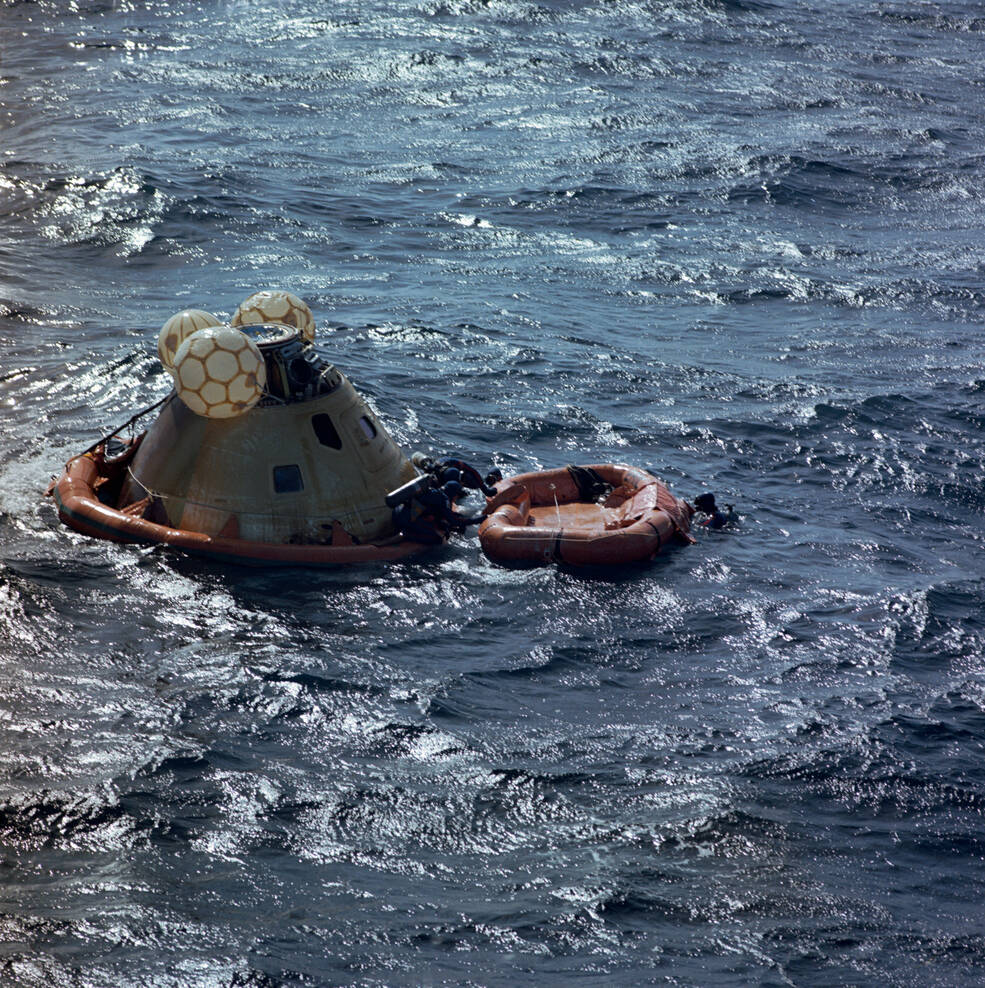
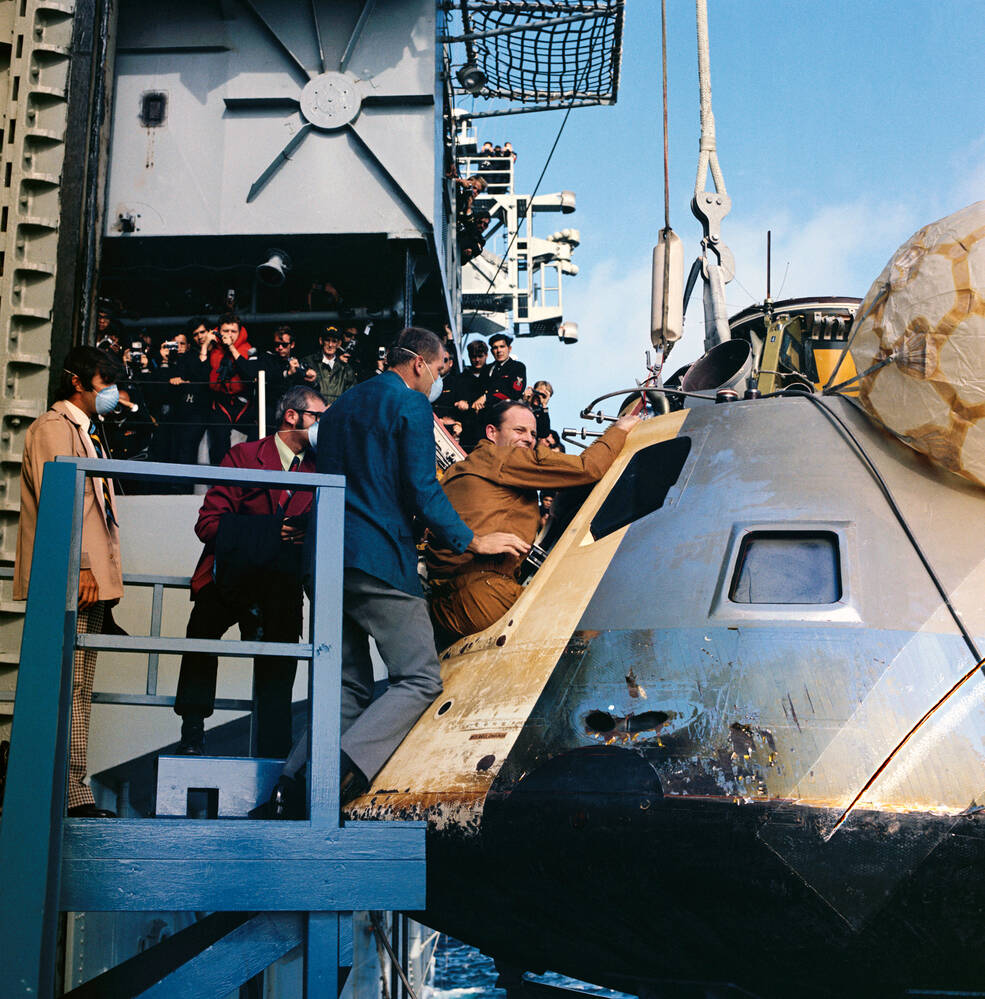
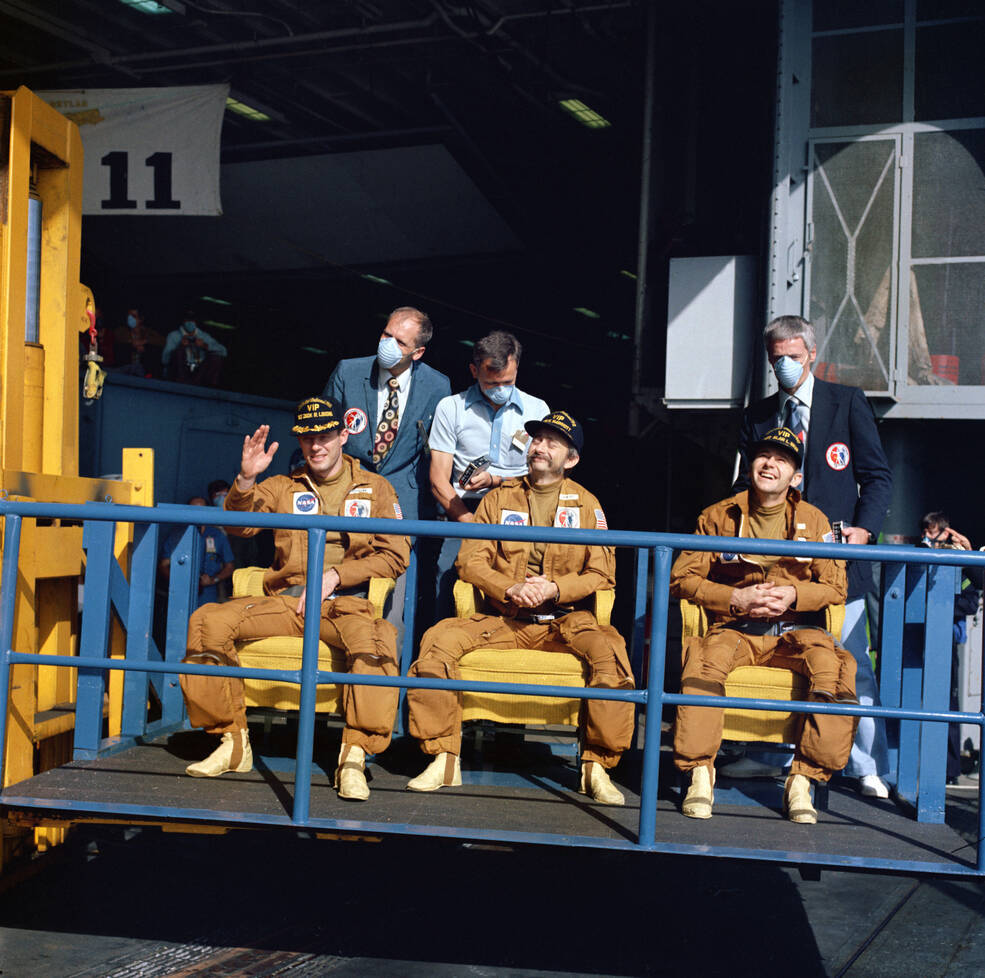
Left: Minutes after splashdown in the Pacific Ocean, U.S. Navy divers attach a flotation collar to the Skylab 3 Command Module (CM). Middle: Recovery team members assist Skylab 3 astronaut Jack R. Lousma out of the CM on the deck of the USS New Orleans. Right: The Skylab 3 crew of Lousma, left, Owen K. Garriott, and Alan L. Bean on board the recovery ship USS New Orleans.
The spacecraft settled in the Stable II or apex down position. The astronauts inflated the three uprighting bags and the CM assumed the Stable I upright orientation within minutes. U.S. Navy divers attached a flotation collar and a tow line to the spacecraft. With the astronauts remaining inside, recovery teams hoisted the spacecraft onto the deck of the New Orleans 42 minutes after splashdown. Medical teams assisted the astronauts out of the capsule and led them to chairs on the deck. Extensive medical checks inside the Skylab Mobile Laboratory found Bean, Garriott, and Lousma to be in better condition than the Skylab 2 crew who spent half as long in space. President Richard M. Nixon sent the Skylab 3 crew a message, saying, “By your scientific endeavor and your physical endurance, you have converted a space vehicle into a repository of more scientific knowledge than mankind can immediately consume. In doing so, you have provided the basis for a quantum jump in human knowledge.” Noting that the splashdown occurred just a few days before the agency celebrated its 15th anniversary, NASA Administrator James C. Fletcher commented that “Skylab 3 is one of the most significant ventures of all times and certainly is a fitting capstone to NASA’s first 15 years.” And when assessing pre-mission expectations of science accomplishments, Fletcher added, “Those expectations have been achieved and exceeded. Skylab has given us the confidence and knowledge we need to plan the best and most productive uses of the new important resources at our command.”
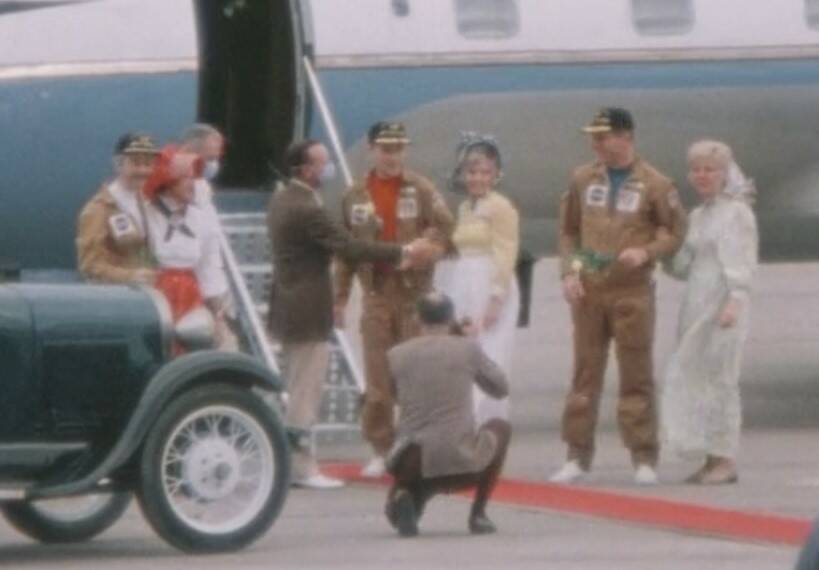
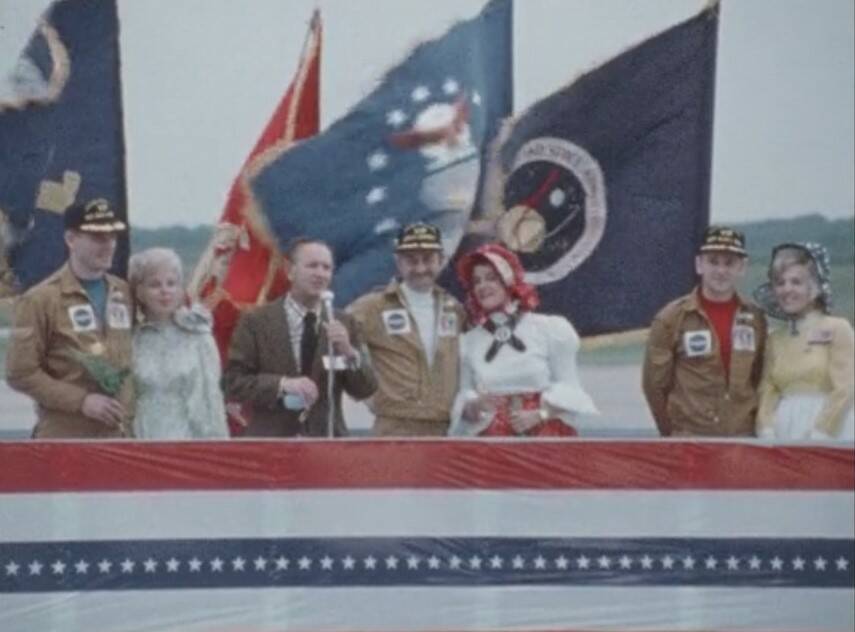
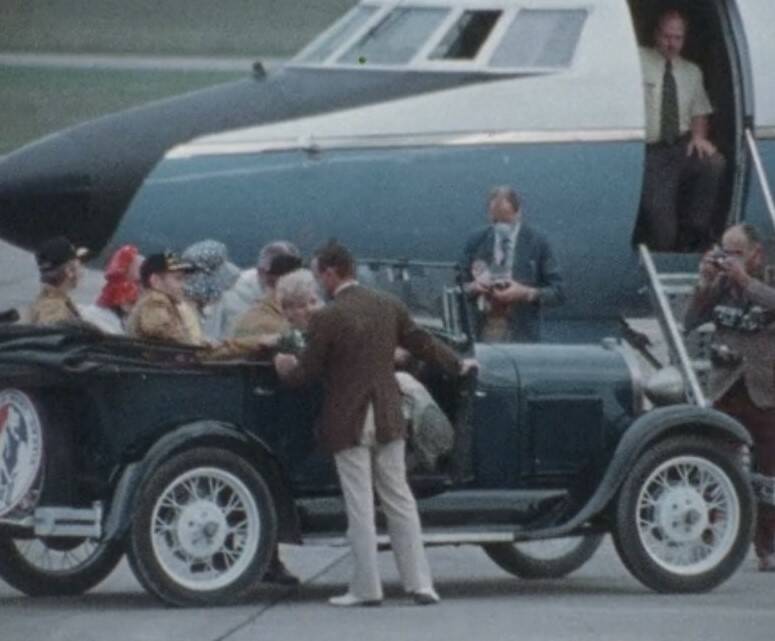
Left: Christopher C. Kraft, fourth from left, director of the Manned Spacecraft Center, now NASA’s Johnson Space Center in Houston, as well as their wives, greet the Skylab 3 astronauts upon their return to Ellington Air Force Base. Middle. Kraft introduces the Skylab 3 crew and their wives to the crowd of well-wishers assembled at Ellington. Right: The Skylab 3 astronauts and their wives climb aboard a vintage 1929 Ford to depart Ellington.
The astronauts stayed aboard the New Orleans for two days of medical tests and recovery as the ship sailed to San Diego. From there, the astronauts flew to Ellington Air Force Base in Houston, where their wives, MSC Director Christopher C. Kraft, and Director of Flight Crew Operations Donald K. “Deke” Slayton, greeted them. Kraft and each of the astronauts gave short speeches to the assembled crowd of well-wishers. The astronauts and their wives then drove off in a vintage 1929 Ford, with Lousma at the wheel. Meanwhile, on Sept. 26, workers offloaded the Skylab 3 CM at North Island Naval Air Station in San Diego, where technicians deactivated the spacecraft, completing the task four days later. On Oct. 1, workers trucked the CM to its manufacturer, Rockwell International, in Downey, California, for postflight inspection. The spacecraft is on display at the Great Lakes Science Center, home to the Visitor Center of the NASA Glenn Research Center in Cleveland, Ohio.
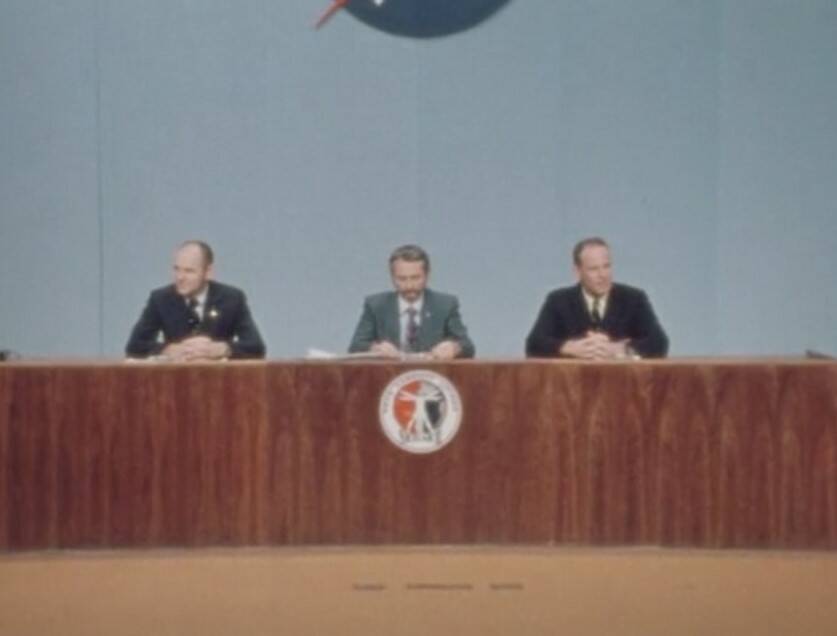
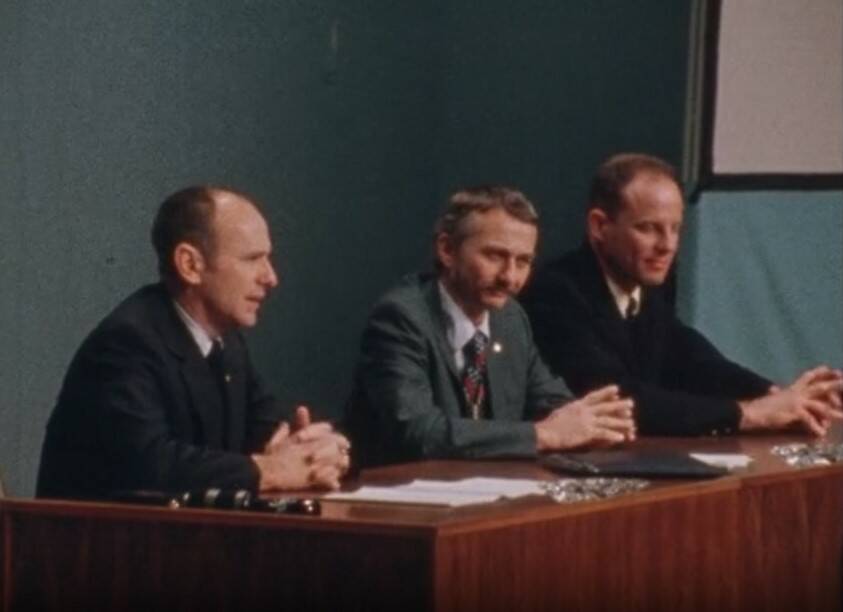
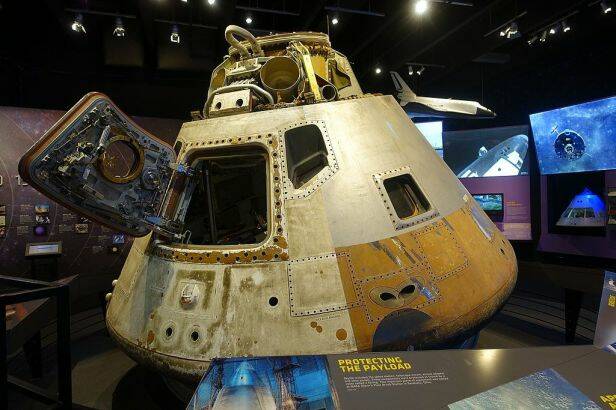
Left: Skylab 3 astronauts Alan L. Bean, left, Owen K. Garriott, and Jack R. Lousma participate in the postflight crew press conference. Middle: Bean, left, makes a point during the press conference as Garriott and Lousma listen. Right: The Skylab 3 Command Module on display at the Great Lakes Science Center, the Visitors Center of the NASA Glenn Research Center in Cleveland, Ohio. Image credit: Courtesy Great Lakes Science Center.
On Oct. 2, Bean, Garriott, and Lousma held a press conference in MSC’s auditorium. They narrated a film of their mission and answered reporters’ questions. Bean praised having Garriott, a trained scientist, as a member of the crew, saying he added a unique perspective that significantly increased their productivity. Garriott, when asked about possible boredom on a long-duration flight, said they never experienced that. He added that he could have floated by the window taking pictures of the Earth for eight hours a day and not get bored. Lousma praised the ground team for their enthusiasm and professional support that kept the station and the research going smoothly. Skylab Program Office Manager Kenneth S. Kleinknecht said that the Skylab 3 astronauts brought back to Earth more than 150 percent of their goal in scientific data. For example, they conducted 305 hours of ATM observations compared to the planned 205 hours, and conducted 39 EREP passes compared to the planned 26. “With the longer duration mission,” Kleinknecht said, “the crew gets more proficient because of inflight training and experience.”
For more insight into the Skylab 3 mission, read the oral histories that Bean, Garriott, and Lousma conducted with the JSC History Office.
























